Research Opportunities
At the heart of physics is experimental and theoretical research that extends our knowledge of the universe, and paves the way for new applications of that knowledge.
Luther Physics Department faculty are active research scholars, maintaining long-term programs of research in their areas of expertise. Students are actively engaged with our faculty in this research, allowing them to gain valuable experience that prepares them for their own careers in the future. Students often are co-authors on publications with our faculty, and regularly present the results of their work at regional and national conferences.
Selected Research
What do you find when you monitor the brightness of 1600 stars? Do they change brightness subtly over time or do odd events appear abruptly and then disappear? To answer these questions and more, we have been studying a single star-rich patch of sky every clear night from March to October since 2005. Learn more about astronomy at Luther.
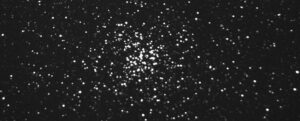
Dr. Perez studies interactions between slow, highly charged ions and surfaces through simulating atomic collisions of various kinds using numerical and computational methods. The work he and his students are engaged with most recently involve the interactions of solar wind ions with comet atmospheres that result in X-ray production, and the interactions of buckyballs (C-60 molecules) with surfaces.
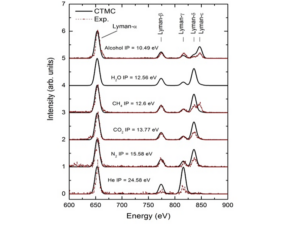
Dr. Pedlar is a member of the Belle and Belle II Collaborations dedicated to studying the physics of heavy quarks at KEK, the national high energy physics laboratory in Japan. These collaborations involve approximately 1000 faculty, postdoctoral associates, graduate students, and a few undergrads like his students at Luther, who hail from over 125 institutions in over 25 countries all over the world. He and his students collaborate with these researchers on analyses of data collected by Belle and Belle II, and on software projects devoted to the current running of the Belle II Experiment, which is expected to take data through 2028 or beyond.
Dr. Pedlar’s research interests are in elementary particle physics—specifically, the physics of heavy quarkonium systems known as bottomonium and charmonium. By studying the spectrum of states of heavy quarkonia-bound states of heavy quark and antiquark, the characteristics of the strong nuclear interaction, which holds together the quarks in protons and neutrons, may be precisely determined. Over the course of the past thirty years studying heavy quarkonia, Dr. Pedlar, his colleagues, and students have discovered several previously unobserved states of heavy quarkonia, observed particular decay modes for the first time, and as a result have been fortunate to be “in the drivers’ seat” as the strong interaction has increasingly become understood.
Pedlar and his students are supported by grants from the National Science Foundation, and have been continuously supported since 2006. He and his students are members of the Belle and Belle II collaborations-international teams that operate experiments at KEK, the National High Energy Research Organization in Tsukuba, Japan. Check the following link for a recent CERN Courier article explaining the significance of the upcoming Belle II experiment, which began commissioning in early 2016, and started collecting data for physics analysis in 2018: “Belle II super-B Factory Experiment Takes Shape at KEK“. The videos below also give a general introduction to this experiment.
Dr. Pedlar has been awarded six consecutive three-year grants from the Elementary Particle Physics subdivision of the Mathematics and Physical Sciences division of the NSF. The latest grant, covering 2021-24, is in the amount of $150,000. This grant will continue to fund summer and academic-year research projects for him and for his students, travel to KEK for meetings and for the operation of the Belle II experiment, and to support the operations of Pedlar’s Linux computing cluster at Luther. He and his students are active collaborators on physics analyses with others around the US and the world. In addition to working together on these studies, they also regularly present the results of their work at both undergraduate conferences, the annual meetings of the American Physical Society, and international conferences.
The activities of Belle II can be followed on Facebook and their Twitter account @belle2collab.
In June 2016, the end-caps of the Belle II Detector were closed, so that the collaboration could conduct some tests on parts of the new detector system that had been installed. A time-lapse video of the end-cap closing, which helps one appreciate the size and complexity of the Belle II detector system, appears here:
In April 2017, the Belle II detector was rolled into its nominal position on the electron-positron beamline so that it is in place to continue testing of both the hardware and software systems, and to be able detect the result of the first beam collisions of electron and positron beams during commissioning runs in early 2018: the strong nuclear interaction, which holds together the quarks in protons and neutrons, may be precisely determined. Over the course of the past thirty years studying heavy quarkonia, Dr. Pedlar, his colleagues, and students have discovered several previously unobserved states of heavy quarkonia, observed particular decay modes for the first time, and as a result have been fortunate to be “in the drivers’ seat” as the strong interaction has increasingly become understood.
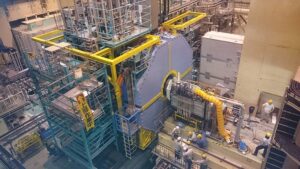
The summer is a particularly good time for students at Luther to get involved in research with our faculty. Each summer, an average of about 9 students per summer are on campus in paid research assistantships. Many of these students continue on into the academic year with these research projects, and develop them into their work for the year-long Senior Project experience that we have in the Physics Department.
The below provides brief descriptions of student research projects carried out at Luther College with our faculty over the past five years (2018-2022).
Summer 2022
- Astrophysics:
- Minh Nguyen, Suman Chapai, and Isaac Roberts searched for and characterized the light curves of variable star and binary star systems in Messier Cluster M23.
- Numerical Methods:
- Josh Muller worked on simulated collisions between ions in the solar wind and the atmosphere of comets entering the inner solar system.
- Elementary Particle Physics:
- Alain Nishimwe, Zella Wynsma, and Jack Moriarty studied charm meson decays as a means to assess the particle-identification capabilities of the Belle II Detector.
- Sam Wilson studied bottomonium decays which involve charm meson as decay products using Belle I data.
Summer 2021
- Astrophysics:
- Thandeka Chaka, Owen Johnson, Darren Kremer, and Isaac Roberts searched for and characterized the light curves of variable star and binary star systems in Messier Cluster M23.
- Numerical Methods:
- Josh Muller worked on simulated collisions between ions in the solar wind and the atmosphere of comets entering the inner solar system.
- Elementary Particle Physics:
- Alain Nishimwe and Sam Wilson studied charm meson decays as a means to assess the particle-identification capabilities of the Belle II Detector.
Summer 2020
- Astrophysics:
- Suman Chapai, Mae Cody, Owen Johnson, Darren Kremer, Jacob Larson, Minh Nguyen, and Sam Wilson searched for and characterized the light curves of variable star and binary star systems in Messier Cluster M13.
- Numerical Methods:
- Thomas Mayerchak worked on simulated collisions between ions in the solar wind and the atmosphere of comets entering the inner solar system.
- Elementary Particle Physics:
- Nicholas Behrens, Aiden Berdahl, and Alain Nishimwe studied charm meson and baryon decays as a means to assess the particle-identification capabilities of the Belle II Detector.
Summer 2019
- Astrophysics:
- Rahul Bagga, Mae Cody, Owen Johnson, and Blake Krapfl searched for and characterized the light curves of variable star and binary star systems in Messier Cluster M23.
- Numerical Methods:
- Thomas Mayerchak worked on simulated collisions between ions in the solar wind and the atmosphere of comets entering the inner solar system.
- Elementary Particle Physics:
- Nicholas Behrens, Aiden Berdahl, and Linnea Lee-Brown studied charm meson and baryon decays as a means to assess the particle-identification capabilities of the Belle II Detector.
- Tribology:
- Abby Fahrenkamp, Alain Nishimwe, and Grace Seiler collaborated on projects in which the Luther College Atomic Force Microscope was used to study nanoscale effects of friction, and, additionally, to characterize the effectiveness of various coatings on AFM tips for reducing wear.
Summer 2018
- Astrophysics:
- Torger Jystad worked at Luther College using eclipse timing to search for evidence of a third body in a partially eclipsing binary system
- Alex Pigarelli worked at Luther College assessing the feasibility of using annular aperture photometric approach to background subtraction in a crowded stellar field.
- Numerical Physics:
- Nell Himlie worked at Luther College on a project involving the numerical simulation of a realistic, physical spring and mass system.
- Elementary Particle Physics:
- Zach Martin worked at Luther College and at KEK in Japan on a study of the production of charm mesons in the decays of the chi_bJ states of bottomonium, using data from the Belle Collaboration
- Tania Proksch worked at Luther College and at KEK in Japan, continuing her study of the inclusive production of charm mesons in electron-positron collisions, using data from the Belle Collaboration.
- Tribology:
- Keegan Danielson continued his research at Luther College on creating a MATLAB-based simulation of contact resonance experiments. Keegan modeled the contact resonance system using Euler-Bernoulli beam theory, which models the AFM cantilever as an extended elastic beam.
- Lucas Ruge-Jones worked at Luther College on creating a MATLAB-based simulation of contact resonance experiments. Lucas modeled the AFM cantilever in the contact resonance system as a simple lumped mass simple harmonic oscillator model.
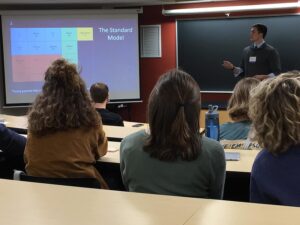
Grant money is used to buy the equipment and supplies that make research possible. It also can support travel to research facilities and conferences, as well as stipends for student work during the summer.
The Physics Department uses the Emil Miller Memorial Endowment Fund to support multiple students each summer. Many Luther physics students have also participated in the NSF-supported research programs of Luther faculty, and, in addition, have secured NSF-support through the Research Experience for Undergraduates (REU) programs at universities across the country.
- In 2021, the National Science Foundation provided an RUI grant of $150,000 for Dr. Pedlar’s continued collaboration on the Belle and Belle II experiments in the study of heavy quark mesons.
- In 2018, the National Science Foundation provided an RUI grant of $178,507 for Dr. Pedlar’s continued collaboration on the Belle and Belle II experiments in the study of heavy quark mesons.
- In 2015, the National Science Foundation provided an RUI grant of $150,561 for Dr. Pedlar’s continued collaboration on the Belle and Belle II experiments in the study of heavy quark mesons.
- In 2012, the National Science Foundation provided an RUI grant of $134,592 for Dr. Pedlar’s continued collaboration on the Belle and Belle II experiments in the study of heavy quark mesons.
- In 2011, Dr. Flater received a National Science Foundation REU supplemental grant of $6,000.
- In 2009 the National Science Foundation provided an RUI grant of $135,000 for Dr. Pedlar’s continued collaboration with the CLEO, Belle, and Belle II experiments in the study of heavy quark mesons.
- In 2008, Dr. Wilkerson received an American Astronomical Society grant of $2,350 to support continued high temporal density monitoring of the field containing open star cluster M23.
- In 2008, the National Science Foundation awarded Dr. Flater and her collaborators Dr. Borovsky of St. Olaf College and Dr. Ashurst of Auburn University with a Research at an Undergraduate Institution grant for the amount of $116,444. The award supports faculty members and summer research students to investigate the frictional properties of phosphonate self-assembled monolayers.
- In 2007, the Department received a $159,000 Major Research Instrumentation grant from the National Science Foundation. This grant allowed for the purchase of an atomic force microscope used for Dr. Flater’s research projects designed to probe the nature of friction at the nanoscale.
- In 2007, an Iowa College Foundation Grant of $2,000 provided funds used by Dr. Wilkerson and his students to search for new variable stars in the field of open cluster NGC2286.
- In 2006, the National Science Foundation provided an RUI grant of $138,000 for Dr. Pedlar’s study of heavy quark mesons with the CLEO collaboration. The grant funds equipment, student stipends and travel associated with the research. The Department also received two Iowa College Foundation McElroy grants for a total of $4,000. The grants supported work in particle physics and astrophysics.
- In 2004, an Iowa College Foundation McElroy Grant of $1,750 supported the study of variable stars in star clusters by Dr. Wilkerson and his students.
- In 2001, the Department received an Iowa College Foundation Maytag Grant of $2,000 for the spectroscopic study of supernovae.
- In 2000, an Iowa College Foundation McElroy Grant of $2,000 supported the development of an astronomical spectrograph. This year the department also received $129,000 from the Roy J. Carver Charitable Trust to support all aspects of astronomical observing.
- In 1999, the Roy J. Carver Charitable Trust provided $129,000 for upgrading the astronomical observing facilities at Luther. The grant provided equipment and facilities used in research as well as classroom work and public outreach.
- In 1998, an NSF ILI grant of $10,171 was used to acquire telescopes, cameras and filters for astronomical work.
In this video, Professor Todd Pedlar and his students, Joshua Jackson (’18), Zachariah Martin (’19) and Tatiana Proksch (’19) work on a long-term particle physics experiment-the Belle Experiment, an international collaborative effort based at the KEK laboratory in Tsukuba, Japan, researching the decay of particle systems made of bottom quarks. Their work is supported in part by RUI grants from the National Science Foundation.
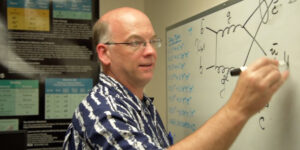
Luther College Physics Professor Todd Pedlar has been a part of a global research project for years. This provides a unique research project for his physics students, providing an education which can truly be Shaped by You! Watch the video.
- Todd Pedlar, Professor of Physics
- Alain Ishimwe, Senior – Physics
- Sam Wilson, Junior – Physics/Mathematics
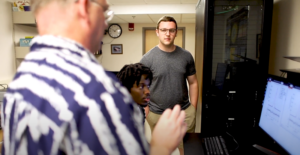
Contact Information
Todd Pedlar
Professor of Physics
Physics Department Head
Office
Valders 272D
Phone: 563-387-1628